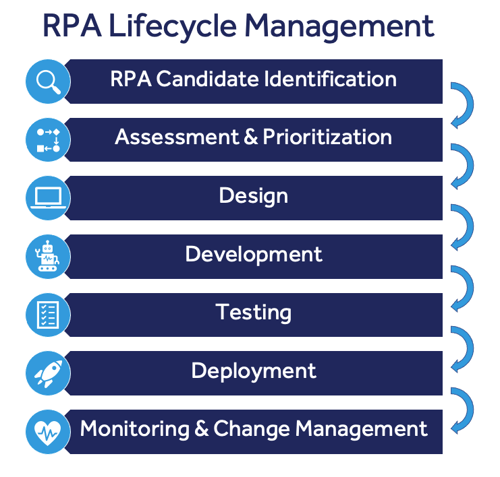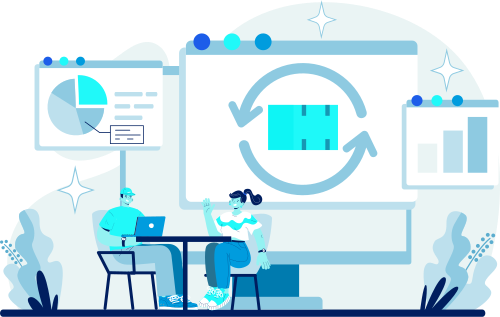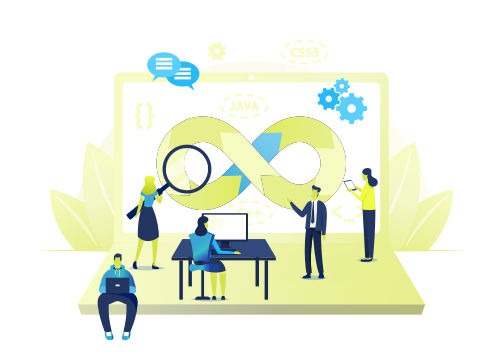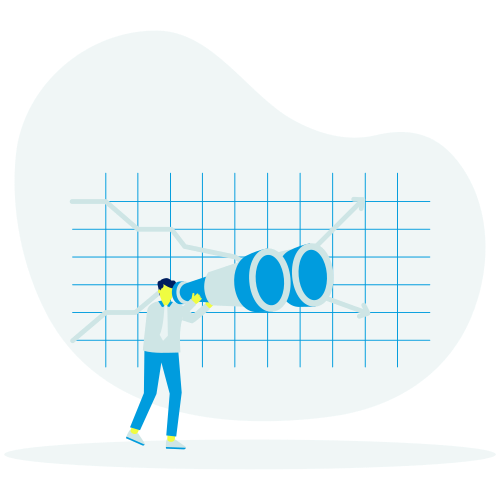RPA Lifecycle Management
Now that RPA (robotic process automation) programs are past the pilot stage, the attention has turned to optimizing RPA lifecycle management, and rightly so. Organizations are intent on capturing the full value RPA promises by maximizing the resiliency of their digital workforce.
To do this, they have to examine how the life of a bot is managed, end to end, and introduce a better way to do things by eliminating sub-optimal practices that lead to brittle bots. Yet before we can get into best practices for RPA lifecycle management, it’s essential to understand what RPA lifecycle management is and define each of the stages that make up a bot’s lifecycle.

What is RPA Lifecycle Management?
At its core, robotic process automation is a form of software development and, as such, follows a common structured process like any other product would for solution delivery.
The RPA lifecycle is the structure of how automation is delivered and executed. It consists of every one of the phases a bot goes through: from identifying a business process or task to automate through to its deployment as a bot in production and its continuous monitoring thereafter.
RPA lifecycle management refers to how each stage of a bot’s life is managed to ensure that it delivers the value to the business that was expected. It provides a framework for process automation to ensure the bot is designed to fulfill its requirements. It also offers a segmented process to ensure each stage of RPA delivery can be assessed and improved to enhance execution and performance.
What are the Different Stages of the RPA Lifecycle?
There are seven stages in the RPA lifecycle:
1 - RPA Candidate Identification
In this stage, RPA stakeholders identify business processes and tasks that are good candidates for automation. The use of process discovery, task mining, or process mining tools may be used to uncover and produce candidates.
2 - Assessment & Prioritization
In the assessment and prioritization phase, business processes and tasks identified as candidates for automation are assessed and prioritized for design and development. The assessment involves technical feasibility. For example, suppose the task or process requires too many decisions to be made or interacts with too many systems increasing its dependency complexity. In that case, it may not be a good candidate for automation.
Learn More: RPA Process Assessment and Candidate Checklist
The assessment will also include the business value its automation can deliver. Is it a high-volume task or process? How many hours will it save having it automated instead of manually executed? Is it error-prone when performed manually, and will automation improve output quality?
Prioritization refers to how automations enter the design and development pipeline and their priority, normally governed according to the effort required for development and the potential business value of that specific automation.
3 - Design
Design as a stage in RPA lifecycle management involves defining and modeling the actual process or task to be automated and mapping any dependencies that the automation might have, like the systems it interacts with or regulations that impact it.
The design phase provides a blueprint for the RPA developer to understand what needs to be automated. Traditionally, design has been completed and packaged in paper-based documents like PDD’s (process design document), however, this approach has proved to be error-prone and ushered in a better, digital way of design.
4 – Development
In the development stage of the RPA lifecycle, the RPA developer builds the bot in the studio of the RPA platform your automation program has enlisted, according to the requirements and definition provided in the design phase.
Again, using a paper-based document like a PDD is not an optimal mechanism to drive development. Software design and delivery has long moved past big BRD’s (business requirements document) that were proven to be ineffective and prone to rework long ago.
5 – Testing
In this stage, the RPA developer or QA team tests the automated process in a staging or testing environment to ensure it executes and performs as expected.
6 - Deployment
Once testing is completed, the bot is deployed in production and runs as configured in the RPA tool’s orchestrator.
7 - Monitoring & Change Management
In the final stage of RPA lifecycle management, the bot is continuously monitored to assess performance and ensure it runs without any errors.
Because bots have so many dependencies and interact with different systems, they are impacted by any change to those systems. Change management is a key stage in a bot’s lifecycle. Proactive change management that can anticipate and correct change before the bot produces errors can prevent a lot of value lost to downtime and increase ROI.
Learn more: How to Build a Successful RPA Implementation Strategy
Why is RPA Lifecycle Management Important?
It goes without saying that RPA isn’t a set it and forget it technology. RPA is essentially software built on top of other software. Each bot has a multitude of interactions with different systems and is impacted by any change to those systems.
Each stage of the RPA lifecycle will impact the bot’s uptime and ability to continually deliver the value RPA promises.
Many of the pain points RPA programs are experiencing today can be traced back to sub-optimal practices during every stage of the RPA lifecycle. For example, bots must be explicitly connected and mapped to their dependencies to enable proactive change management when an impending change to a legacy system or regulation impacts a bot in the future, which it will. This ensures the bot doesn’t just break and sit idle while its break is investigated, corrected, tested, and redeployed.
The good news is that it doesn’t have to be that way. Improved RPA uptime and greater returns are easily attainable with the right solutions and the addition of some best practices in your RPA lifecycle management.
Enter Blueprint.
How Does Blueprint Significantly Improve RPA Lifecycle Management?
As the world’s most powerful automation design and management environment, Blueprint’s Enterprise Automation Suite radically improves the RPA lifecycle to produce higher-quality bots like no other solution available on the market. It is purpose-built to enable all RPA stakeholders to better design, plan, and manage high-value automations with precision and ease by building Digital Blueprints.
Digital Blueprints are the better, digital way to design, plan, and communicate automation work, leading to customers experiencing faster bot design and development by 2x and a 50% decrease in bot errors.
Want to learn more? Watch this short video and discover how Digital Blueprints radically accelerate and scale the design and delivery of automation.
Share this
Recent Stories

Optimizing RPA Lifecycle Management with the Blueprint Suite

A Holistic Approach to RPA Lifecycle Management

